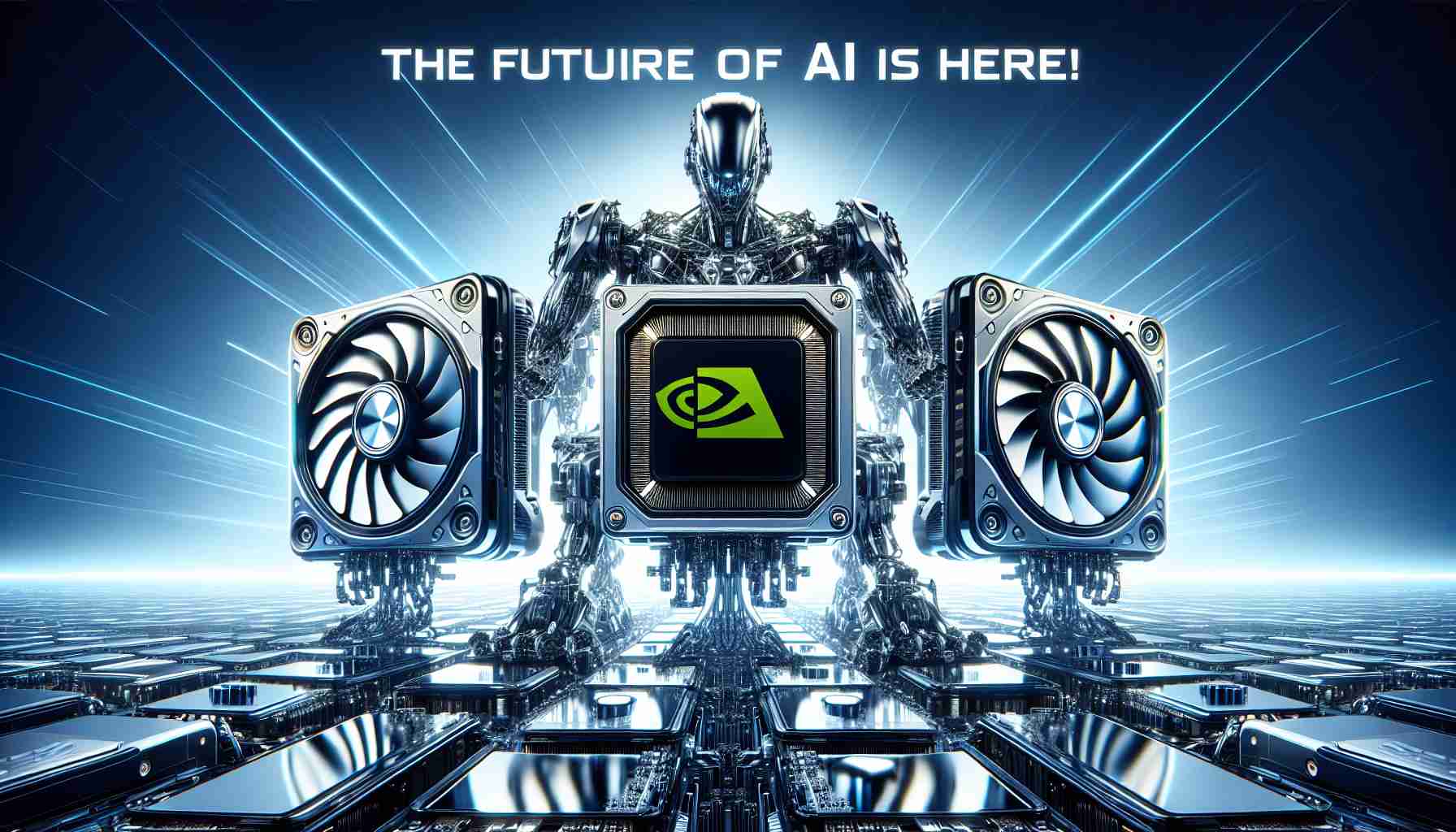Nvidia’s Bold Robotics Vision
Nvidia, a leader in AI tech, is setting its sights on the burgeoning robotics sector as it navigates increasing competition in the artificial intelligence chip market. The company is gearing up to introduce its next-generation compact computer tailored for humanoid robots, known as Jetson Thor, with a slated release in early 2025.
Deepu Talla, the vice president of robotics at Nvidia, emphasized the imminent revolution in the field, suggesting that the integration of AI into physical robotics is on the verge of a breakthrough. He expressed a strong belief that the industry has now reached a pivotal moment of change, often referred to as a “tipping point.”
Nvidia’s approach extends beyond hardware; it includes a full suite of solutions ranging from advanced AI training software to the cutting-edge chips that will drive future robots. This comprehensive strategy positions Nvidia to capitalize on the growing demand for robotics technology.
As Nvidia embarks on this ambitious venture, it faces fierce rivalry from other chip manufacturers like AMD, as well as tech titans in the cloud space such as Amazon, Microsoft, and Google. These forces are rapidly transforming the landscape of AI and robotics, setting the stage for a thrilling competition in the years to come.
Nvidia’s Future in Robotics: Innovating the Next Era of AI-Driven Machines
### Introduction to Nvidia’s Robotics Vision
Nvidia is not just a leader in AI technology; it is making significant strides in the robotics sector. With the anticipated launch of its next-generation compact computer, Jetson Thor, the company aims to transform the way humanoid robots operate. This innovative product is scheduled for release in early 2025 and is part of Nvidia’s broader mission to integrate artificial intelligence into real-world applications.
### Key Features of Jetson Thor
Jetson Thor will equip humanoid robots with advanced computational power, enabling them to perform complex tasks with greater efficiency. This new compact computer is designed to handle various AI workloads and offers superior processing capabilities compared to previous models. With Nvidia’s cutting-edge chips and software, the Jetson Thor is poised to empower developers and engineers to create advanced robotics solutions for diverse applications.
### Use Cases for Robotics in Various Industries
The implications of Nvidia’s advancements in robotics are extensive. Various industries are poised to benefit from AI-driven robotic solutions, including:
– **Healthcare**: Robots can assist in surgeries, provide patient care, and enhance operations in hospitals.
– **Manufacturing**: Automated robots can improve production efficiency, quality control, and reduce human labor risks.
– **Logistics**: Delivery robots and automated warehouse systems could streamline operations and reduce costs.
– **Agriculture**: Robots could assist in tasks ranging from planting to harvesting, optimizing resource use and crop yields.
### Pros and Cons of Nvidia’s Robotics Expansion
#### Pros:
– **Enhanced Efficiency**: AI integrated into robotics can optimize tasks and reduce operational costs.
– **Innovative Solutions**: The introduction of Jetson Thor may lead to groundbreaking applications in various fields.
– **Industry Leadership**: Nvidia’s advancements can solidify its position as a leader in AI and robotics.
#### Cons:
– **Rising Competition**: The robotics sector is becoming increasingly crowded with competitors like AMD and tech giants such as Amazon and Google.
– **Technological Challenges**: Developing advanced robotics requires overcoming significant technical hurdles, including ensuring safety and reliability.
– **Market Risks**: The rapid pace of innovation can lead to market saturation or shifts in consumer demand.
### Market Trends and Innovations
The robotics market is experiencing rapid growth fueled by advancements in AI technology. With the industry’s evolution, companies are increasingly investing in innovations that enhance robotic capabilities. Nvidia’s Jetson Thor is part of a larger trend where AI and machine learning are becoming integral to robotic functionalities.
### Pricing and Availability
Nvidia has not yet disclosed specific pricing information for Jetson Thor; however, it is anticipated to align closely with the company’s existing product lines. As demand for robotics solutions rises, competitive pricing strategies will likely emerge to attract developers and businesses.
### Security Considerations in Robotic Technology
As robotics technology advances, so do concerns about security and privacy. With AI-driven machines connected to networks, protecting against cyber threats becomes paramount. Nvidia’s robotics solutions will need robust security measures to safeguard operational integrity and user data.
### Predictions for the Future of Robotics
Looking ahead, it is predicted that AI-integrated robotics will become ubiquitous in various sectors, driving widespread adoption. As companies like Nvidia invest in developing advanced tools for engineers, we can expect to see more innovative applications emerge, transforming industries and everyday life.
### Conclusion
Nvidia’s commitment to advancing robotics through AI technology, epitomized by the upcoming Jetson Thor, positions it well within a competitive landscape. As the robotics sector continues to evolve, Nvidia is poised to lead the charge, driving innovations that will reshape industries and enhance efficiencies across the board.
For further exploration of Nvidia’s innovations in technology, visit Nvidia.
